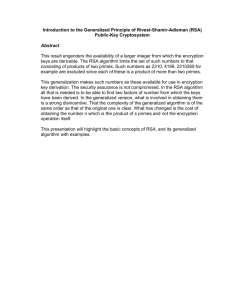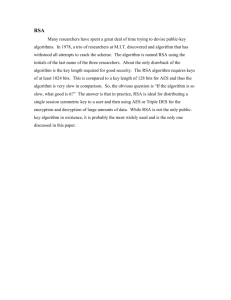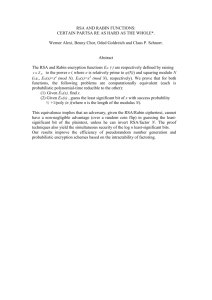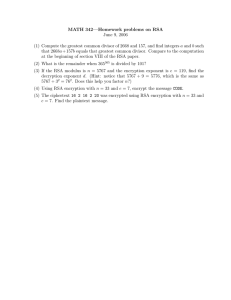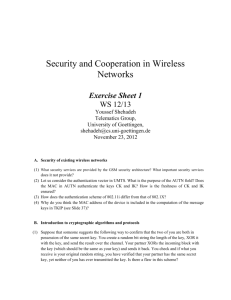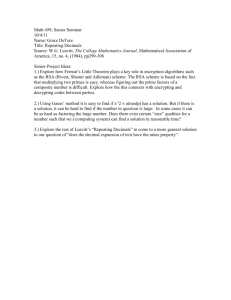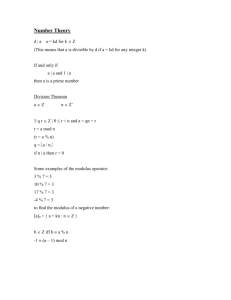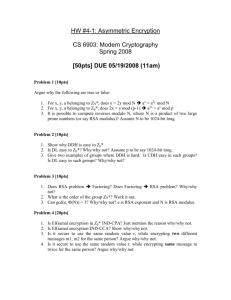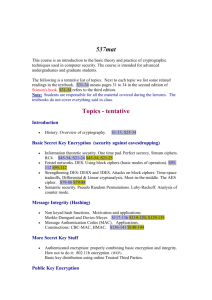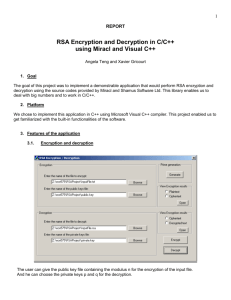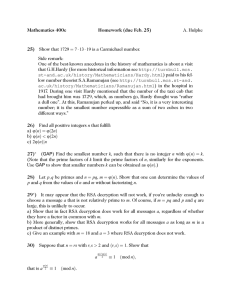Lecture 16 Handout
advertisement
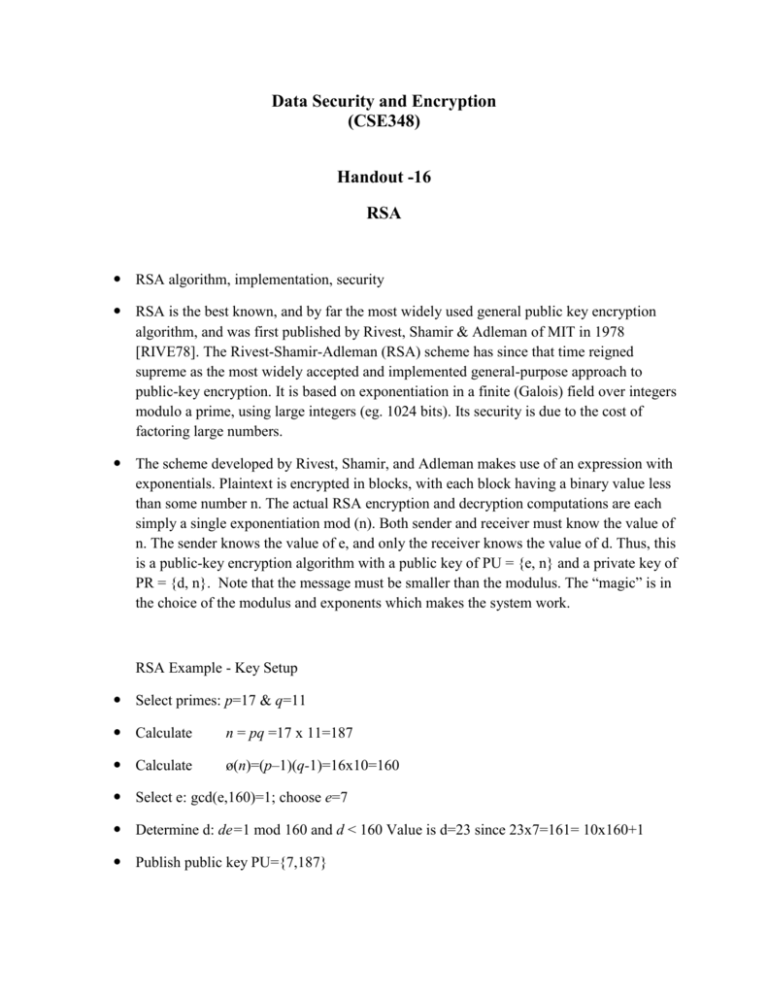
Data Security and Encryption
(CSE348)
Handout -16
RSA
RSA algorithm, implementation, security
RSA is the best known, and by far the most widely used general public key encryption
algorithm, and was first published by Rivest, Shamir & Adleman of MIT in 1978
[RIVE78]. The Rivest-Shamir-Adleman (RSA) scheme has since that time reigned
supreme as the most widely accepted and implemented general-purpose approach to
public-key encryption. It is based on exponentiation in a finite (Galois) field over integers
modulo a prime, using large integers (eg. 1024 bits). Its security is due to the cost of
factoring large numbers.
The scheme developed by Rivest, Shamir, and Adleman makes use of an expression with
exponentials. Plaintext is encrypted in blocks, with each block having a binary value less
than some number n. The actual RSA encryption and decryption computations are each
simply a single exponentiation mod (n). Both sender and receiver must know the value of
n. The sender knows the value of e, and only the receiver knows the value of d. Thus, this
is a public-key encryption algorithm with a public key of PU = {e, n} and a private key of
PR = {d, n}. Note that the message must be smaller than the modulus. The “magic” is in
the choice of the modulus and exponents which makes the system work.
RSA Example - Key Setup
Select primes: p=17 & q=11
Calculate
n = pq =17 x 11=187
Calculate
ø(n)=(p–1)(q-1)=16x10=160
Select e: gcd(e,160)=1; choose e=7
Determine d: de=1 mod 160 and d < 160 Value is d=23 since 23x7=161= 10x160+1
Publish public key PU={7,187}
Keep secret private key PR={23,187}
RSA Key Generation
Before the application of the public-key cryptosystem, each participant must generate a
pair of keys, which requires finding primes and computing inverses. Both the prime
generation and the derivation of a suitable pair of inverse exponents may involve trying a
number of alternatives. Typically make random guesses for a possible p or q, and check
using a probabalistic primality test whether the guessed number is indeed prime. If not,
try again. Note that the prime number theorem shows that the average number of guesses
needed is not too large. Then compute decryption exponent d using Euclid’s Inverse
Algorithm, which is quite efficient.
RSA Security
some possible possible approaches to attacking the RSA algorithm, as shown.
The defense against the brute-force approach is the same for RSA as for other
cryptosystems, namely, use a large key space. Thus the larger the number of bits in d, the
better. However because the calculations involved both in key generation and in
encryption/decryption are complex, the larger the size of the key, the slower the system
will run.
-----------------------------------------------
